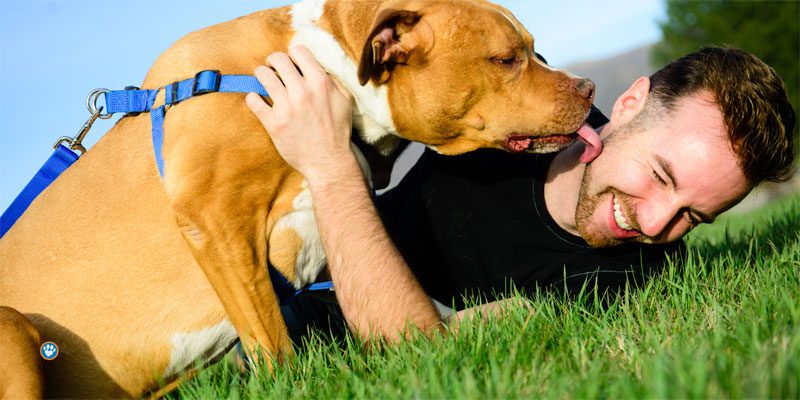How Is The XL Bully Ban Going?
Since the 1st of February 2024, it has been a criminal offence to own an XL bully without an exemption certificate. In order to acquire a certificate, owners had to purchase insurance, neuter the dog and pay a fee of £92.40 per dog. XL bullies must also be kept on a lead and muzzled while out in public. But how is the XL bully ban going a year and a half later? Holidays4Dogs finds out.
This was a public and political issue that raised many concerns from various sources – not least owners themselves – many of whom were unhappy about the ban and enforced restrictions on how their dogs live their lives.
There were 61,000 applications for exemption paperwork when the ban on this breed of dog came into force in February 2024. However, since the new law, there have been reports of continued attacks by these dogs and police claim they have a big task enforcing the ban. So what’s going on?
What is an XL Bully?
XL bully dogs are not a specific breed. Rather they are the largest type of American Bulldogs, with lineage originating from other types of bull breeds, such as American pit bull terriers. With large muscular bodies and deep chests, xl bullies stand around 19 – 20 inches in height. (Adult dogs – females are slightly shorter). XL bullies can differ in looks which has made it all the harder to identify the dogs. Some dogs that aren’t actually xl bullies have been seized.
Historically, bull breeds were originally bred for sports such as bull baiting – hence the name. However, modern breeders of these dogs aimed to develop a dog with the physical characteristics of the American pit bull, but with a gentler temperament. Sadly, though, there were many unscrupulous breeders who just wanted to make money from the growing popularity of xl bullies.
Why the ban?
In response to an increase in attacks – some of which tragically ended in the deaths of people – the UK Government decided to add xl bullies to the list of dogs banned under the Dangerous Dogs Act 1991.
In September 2023, after an attack on an 11 year old girl, Britain’s home secretary sought to investigate the possibility of banning these dogs completely. Prior to this, campaigners had already been calling for a ban on xl bullies.
After another attack on a 52 year old man, who was tragically killed by two of these dogs, Rishi Sunak pledged to ban the xl bully dog. At the time, CBS News reported that a police chief from the National Police Chief’s Council said the ban would create “logistical challenges” for police officers.
Enforcement Burden.
The job of enforcing the ban on xl bullies has placed a huge burden on police forces UK-wide. The police receive no extra funding for their part in enforcing the ban on xl bullies. Between February (when the ban came into force) and September 2024, costs of veterinary fees and kennelling of banned breeds rose to 11 million pounds. In 2018, these costs were closer to 4 million.
Has the ban reduced dog attacks?
In the first year of the ban, there were 9 reported cases of fatal dog attacks. Five of those were by xl bullies. However, the incidents took place in people’s homes where restrictions don’t apply.
While the ban might have protected people from xl bully attacks in public spaces, it has not completely eradicated incidents within people’s homes. People – children especially – are still being hurt in their own homes. In addition, dog attack figures (by all breeds of dog) in general, have continued to rise.
There were 23,063 incidents of dogs (all breeds) dangerously out of control in public spaces between 1st February 2024 and the 31st January 2025. That’s a huge increase from the 14, 212 incidents seen five years ago.
Is the ban really working then?
There were many critics of the xl bully ban at the time. Significantly, many welfare charities, the UK Kennel Club and the British Veterinary Association have long been against breed specific legislation. The reasons for this include – it being unfair on responsible owners, as well as welfare issues.
Targeting a specific dog breed, doesn’t eradicate irresponsible owners. A point reflected in the numbers of attacks by xl bullies, within people’s homes, since the ban came into effect. In addition, breed specific legislation raises welfare issues – with many healthy, well cared for dogs being unfairly affected. As well as this, xl bullies are a ‘type’ – not a breed. Therefore, a dog that looks like an xl bully can be seized.
The RSPCA state ;-
“We believe that focusing on the type of dog rather than its actions is a flawed approach. Dog aggression is highly complex, and a breed-focused approach is fundamentally flawed”
Conclusion.
Any dog is capable of biting, but large breed dogs – particularly the bull breeds are stronger and more capable of inflicting injury. That said, there are many large breeds, bull breeds included, with lovely temperaments who pose no threat to society. There are also many responsible owners and breeders, but it is the irresponsible ones that need tackling.
Targeting specific breeds of doesn’t address irresponsible owners. Indeed, it ignores the many irresponsible owners who own any breed of dog that bites. The legislation does not tackle the overall rise in dog attacks occurring in the UK. And – it has not stopped attacks by xl bullies.
Surely, there needs to be more robust laws that punish owners of dogs dangerously out of control – either in a public space, or within the home. We have heard of dogs attacking people – as well as other dogs ( in some cases killing other dogs ). Yet, effective punishment seems severely lacking. Even though the Dangerous Dogs Acts encompasses all breeds of dog acting in a dangerous manner – owner prosecution doesn’t seem to happen nearly enough.
On top of this, people are now looking elsewhere for large breed dogs. The Cane Corso is already rising in popularity and equally subject to ending up in the hands of irresponsible owners and breeders. Could this be the next breed to be added to the list of banned breeds?





